How to grow luffa plants at home – and harvest your own natural sponges
Have you ever wondered about how to grow luffa? Discover all you need to know, with expert tips covering everything from sowing to harvesting
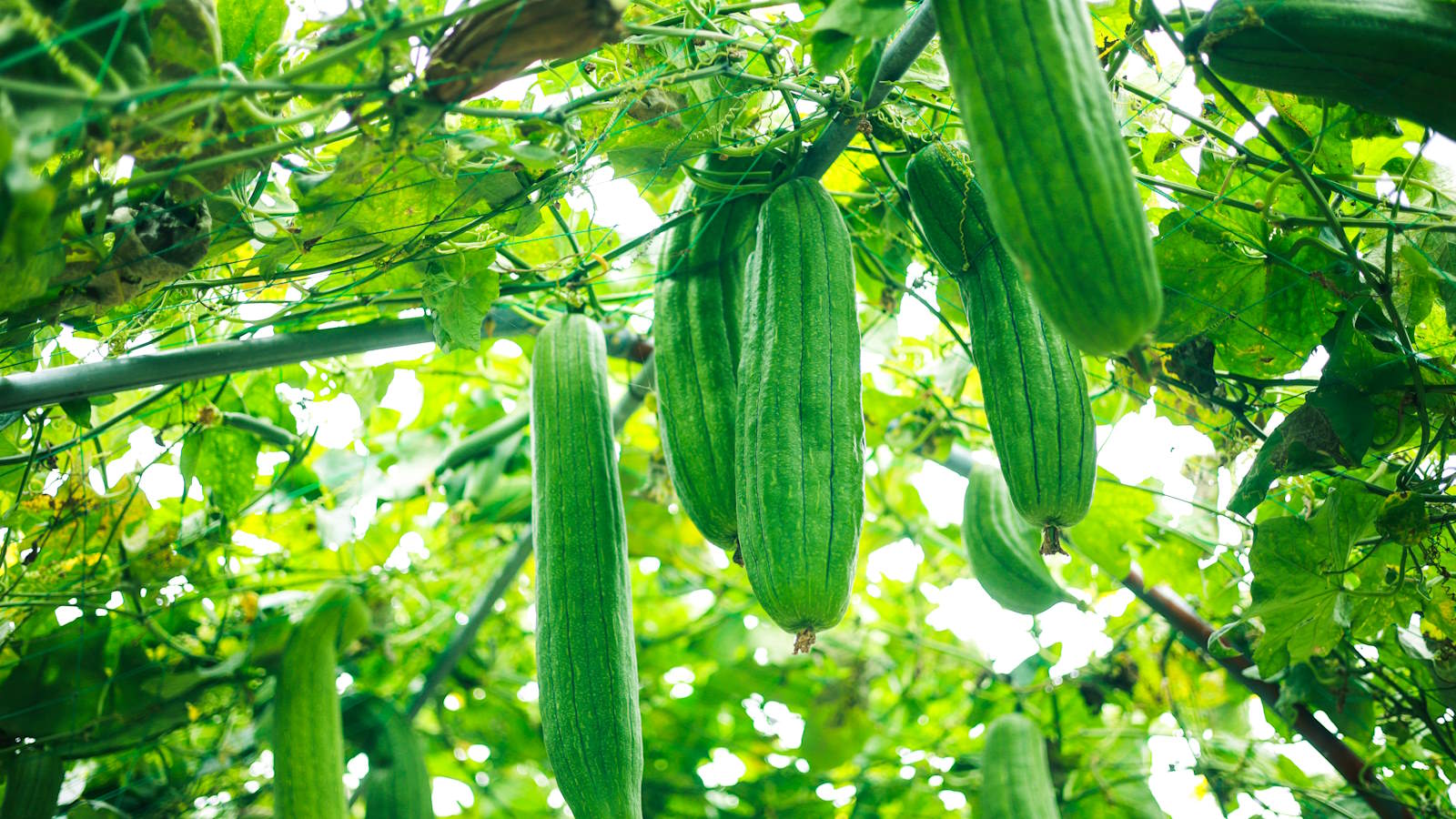

Growing luffa is an increasingly-popular way to produce your own sustainable, natural sponges in your backyard.
The luffa plants are fast-growing vines grown for the fruit they produce. Those fruits can be very long and look similar to a cucumber but, while they can be eaten when young, their primary use is as an exfoliating sponge.
Luffas are being grown more and more in vegetable gardens and kitchen gardens in recent years, as people look for new, unusual, and sustainable crops and vegetables to plant.
If you are intrigued by the idea of growing luffas, we hear from an expert on these vining plants to help guide you through all you need to know about how to grow luffa.

Luffa gourds grow impressively long
Are luffa simple to grow?
Luffa plants have a long growing season and require lots of sun and strong supports to climb up.
There are a few intricacies to get right to have success growing luffas, but, if you have previously grown cucumbers, then you are likely to find growing luffa a very similar experience.
How to grow luffa from seed
Luffa plants are grown as annuals from seed each year and it can take between 150 and 200 days to go from sowing the seed to harvesting. The seeds can either be planted directly into the soil, or started earlier in pots indoors to extend the season in colder climates.
How to plant luffa seeds
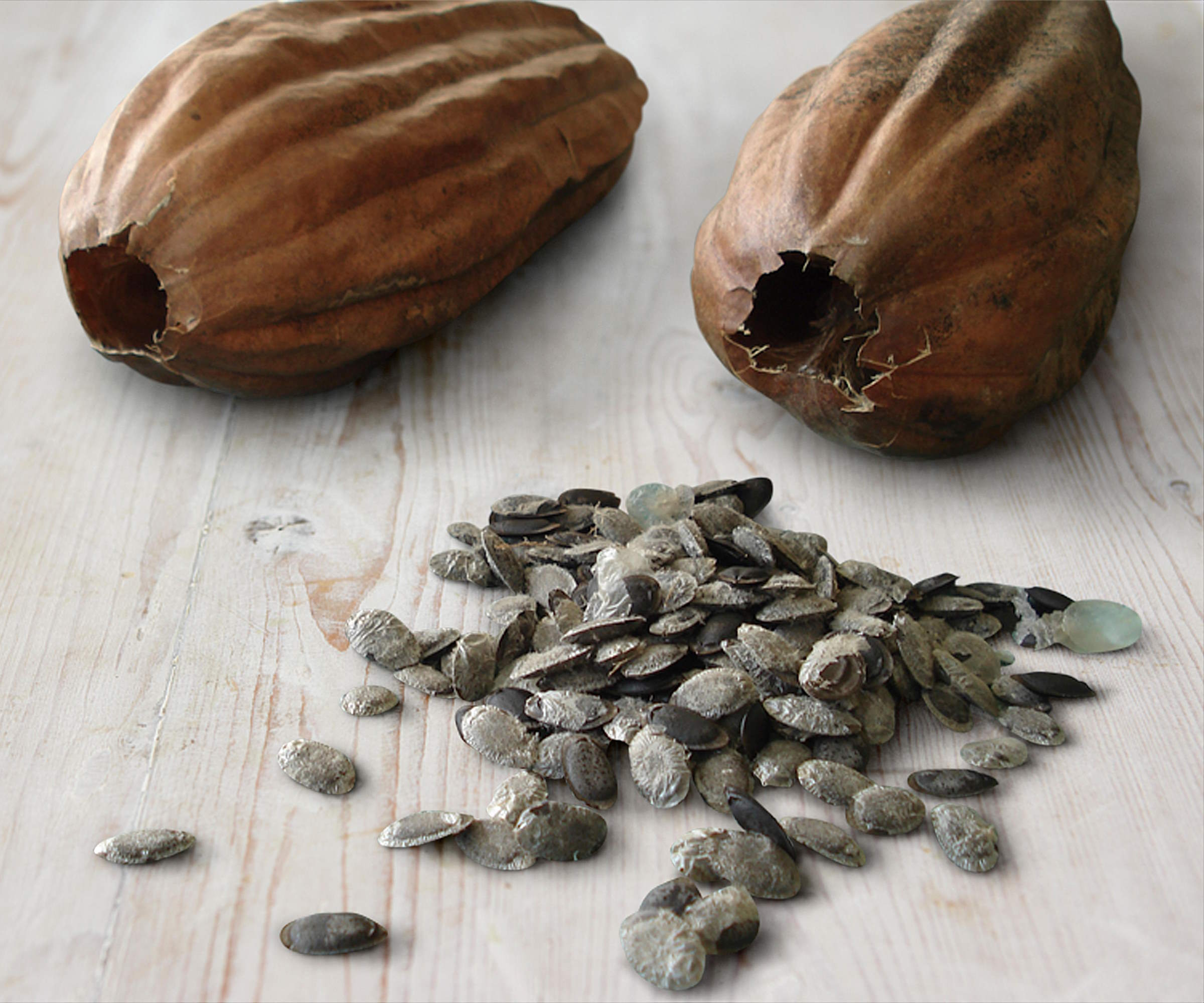
Luffa seeds benefit from a soak prior to sowing
Luffa seeds are notorious for being a bit tricky to germinate, though there are some key tricks that can help improve your chances of the seeds growing successfully. Janice Cox, author of Beautiful Luffa, recommends: ‘When seed starting, I usually give my seeds a little knick on the rounded end with some nail clippers and soak them in water for 24 hours.’
After the seeds get their knick and a soak, then comes the planting. Janice Cox claims ‘luffa seeds do best when sowed directly’ into the garden in late spring, once the risk of frosts has passed and the soil has warmed to at least 70°F. Sow the seeds at spacings of around six feet between plants - this may sound a lot but luffa plants are vigorous growers that can get as long as 30 feet.
However, due to the plant’s long growing season, sowing directly outdoors is not feasible for growers in all US hardiness zones. ‘You can also start your seeds indoors and transplant once all danger of a heavy freeze is over,’ says Janice. ‘I like to use paper pots that will break down over time, so you do not disturb the luffa roots.’
To sow luffa seeds indoors, fill pots with a good quality potting mix designed for starting seeds and plant each seed two inches deep in the soil. Keep it moist and at a temperature of 70-75°F. An ideal location to ensure germination would be a greenhouse or heated propagator on a bright windowsill. Keep the soil moist and then transplant the seedlings into the garden from mid-spring onwards after the risk of frosts has passed.
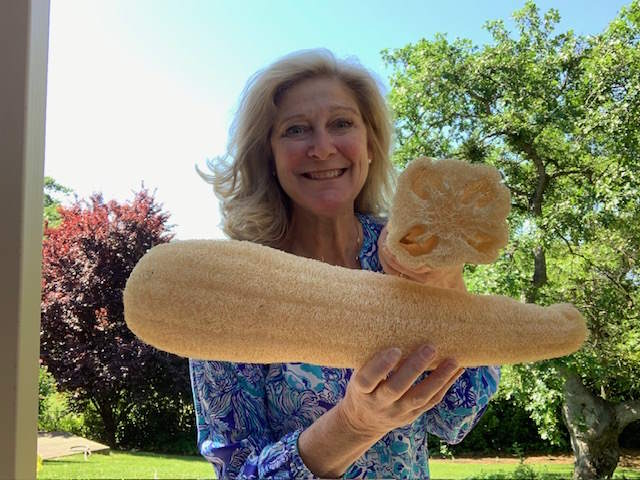
Janice Cox is a garden writer and natural beauty expert. She is the author of Beautiful Luffa, available at Amazon, along with Beautiful Flowers, Beautiful Lavender, Natural Beauty at Home, Natural Beauty from the Garden, Natural Beauty for All Seasons and the newly released Natural Beauty at Home Handbook.
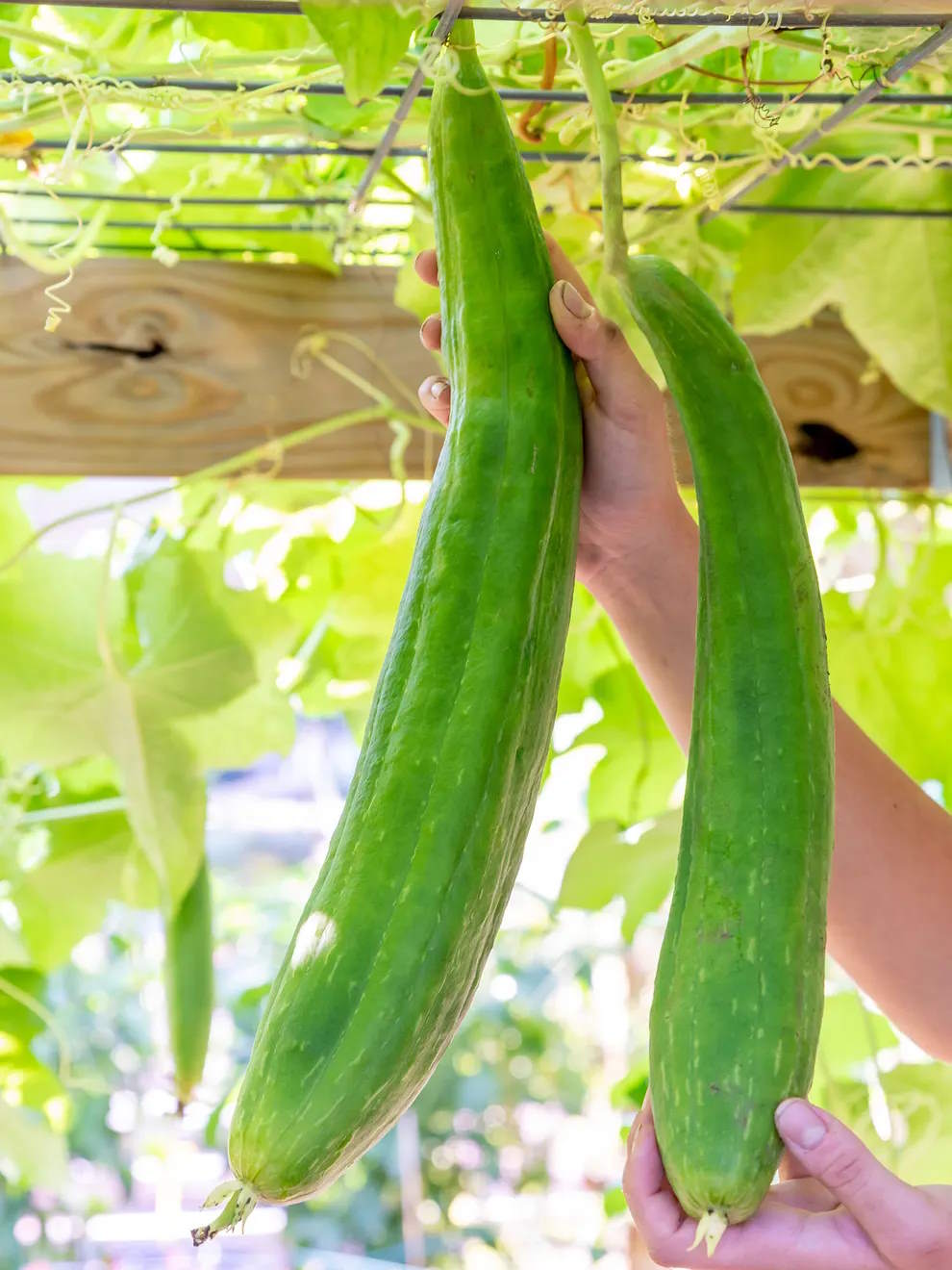
A heirloom variety of luffa seeds so you can grow your own sponges at home, or harvest young fruits for soups and stews
Where to plant luffa
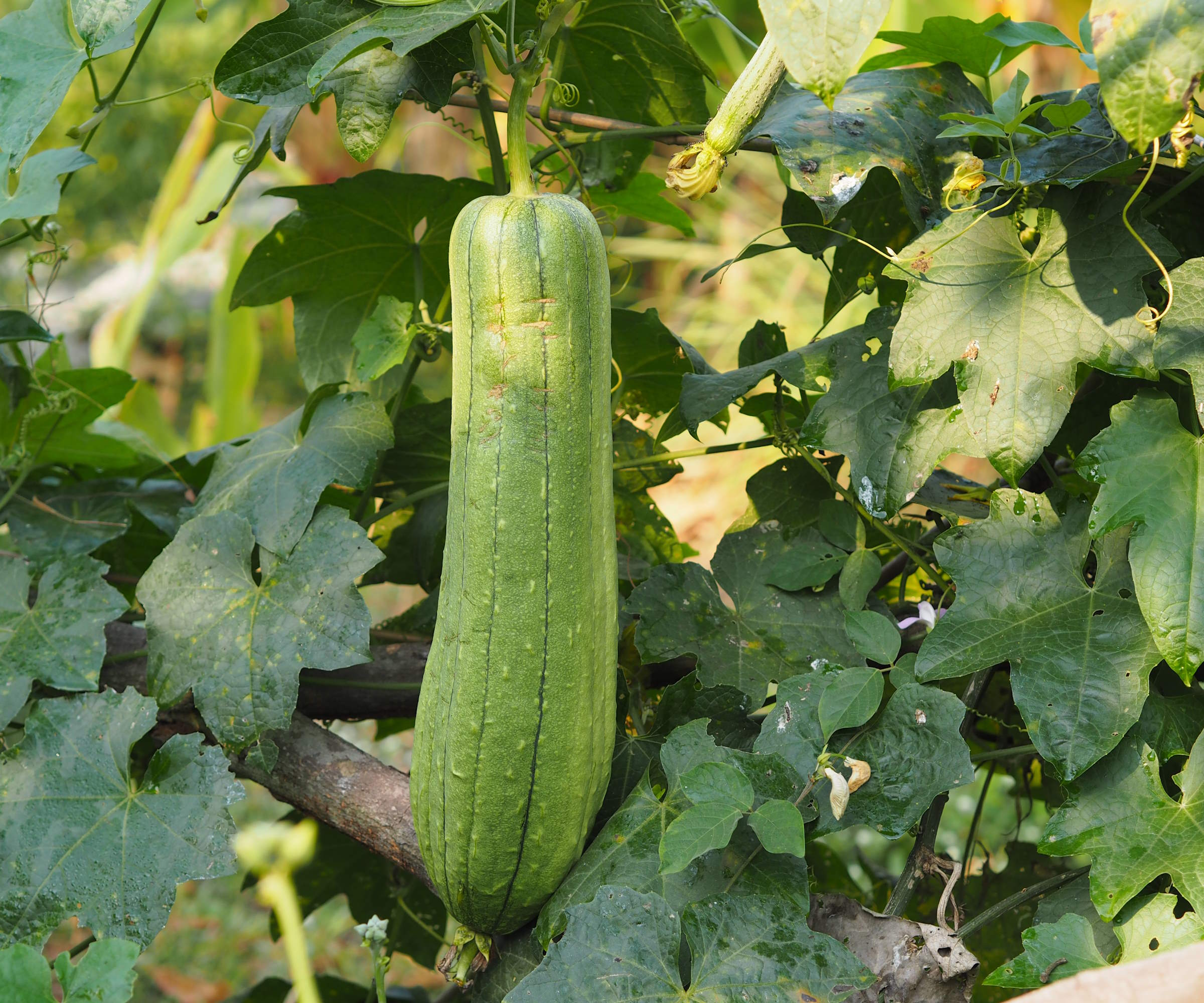
Plant supports are essential when growing luffa vines
Luffa plants love sun and they want to be planted somewhere that gets at least six hours of sunlight per day. If you are planning a greenhouse or polytunnel for the year, they are fantastic crops to grow indoors in a warm and protected environment. Otherwise, consider growing luffa plants against a sunny wall or use it as a plant to cover a fence.
They are fast-growing climbing plants so do need supports to grow along, whether it is a trellis or wires attached to a permanent structure. You can get kits that come with all you need to install a trellis onto a wall or garden building, such as this wire trellis kit available at Amazon.
Grow your luffa plants in a rich, fertile, and well-draining soil type that is boosted by the addition of lots of organic matter prior to planting.
How to care for luffa
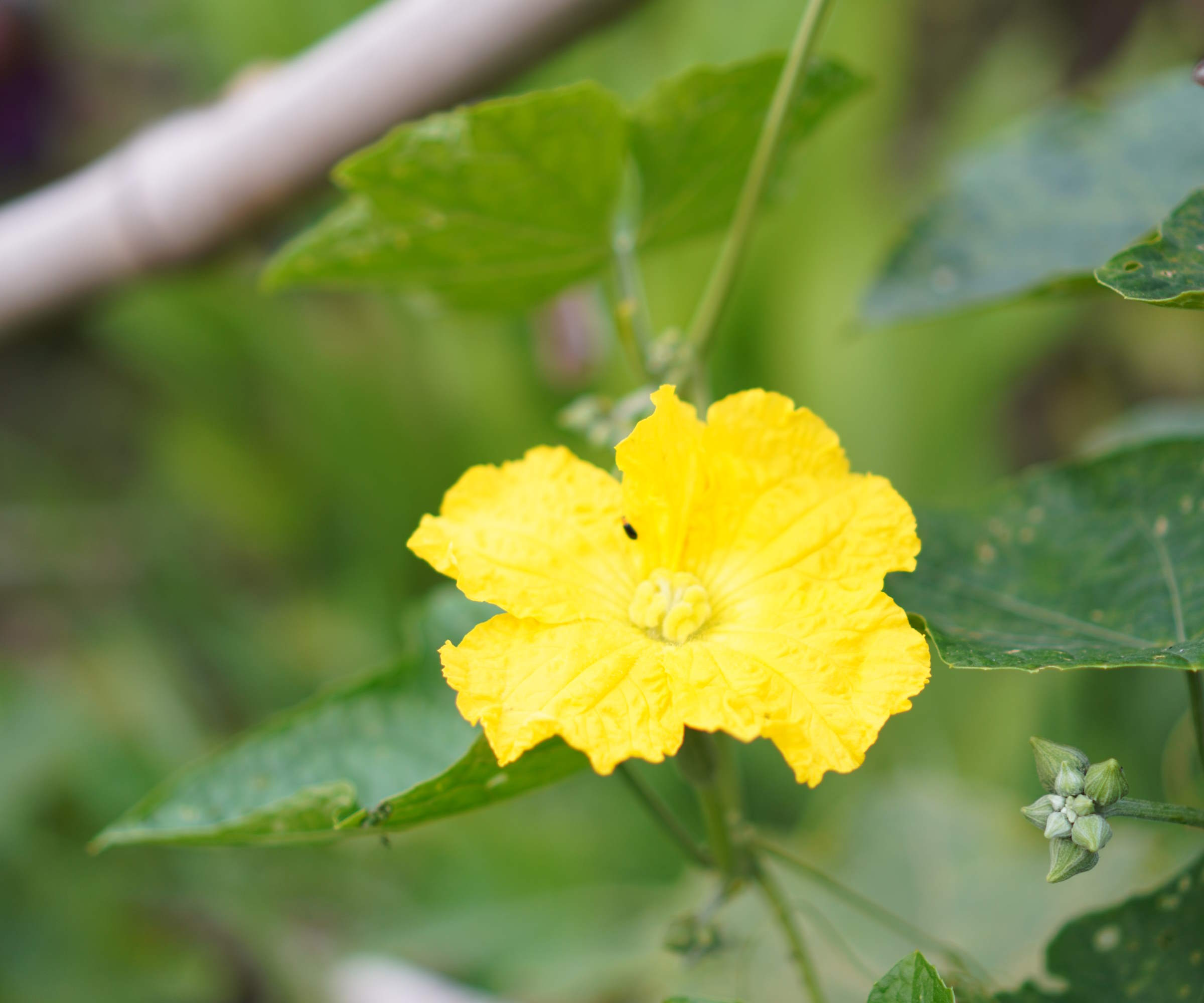
Luffa blooms attract bees and other pollinators
As plants are so fast-growing, it makes luffa plants very hungry feeders that require lots of water and nutrients to keep up the rapid pace at which they develop. Keep the soil moist and make sure to water plants regularly.
Luffa plants want consistently moist soil, but not to sit waterlogged. If you are growing the plants indoors, in a greenhouse for example, then it is important to check regularly when to water plants and keep the soil moist in the summer heat. When it comes to how to water plants, water the ground and not the vines itself. Soaking the foliage is a garden watering mistake that increases the risk of fungal issues, such as powdery mildew.
Luffa plants will benefit from additional fertilization during the growing season, however, Janice Cox warns ‘do not fertilize your plants until you see the first blossoms’. The addition of organic matter, such as compost or well-rotted manure, prior to planting will provide enough nutrients to see the plant through until it is flowering. Feed plants with a balanced slow-release fertilizer at this time to promote flowering and the production of fruits. An example of a good feed to use would be this all-purpose fertilizer available at Walmart.
You can use companion planting to help guarantee the pollination of flowers and the production of fruits. ‘Planting flowers such as yarrow, or lavender near your patch will attract pollinators,’ says Janice. 'You can also easily hand pollinate.’
It takes up to 200 days from sowing the seed to the mature fruits being ready to harvest. The time to harvest luffa tends to come from late fall onwards and the fruits want to mature completely on the vine.
The outer skin of the luffa turns brown and the seeds rattle inside when ripe. The mature luffa fruits want to be carefully cut from the vine and then the skin peeled and seeds removed. The sponge is the inner plant skeleton.
FAQs
Can you grow luffa in a pot?
Luffa plants grow very large in size, the vines can reach up to 20-30 feet and do require a sturdy support to grow up. They can be grown in pots, but the container does need to be large in size to accommodate a luffa plant’s sizable root system that is required to support all that top growth. If you do want to try growing luffa as part of a container garden, a pot at least 18 to 24 inches across will be required for one plant.
Growing plants upwards on supports and trellises as part of a vertical garden is a great way to utillize space and also cover areas that are often left bare, such as walls and fences. Luffa are one great crop for growing vertically, while you can also grow squashes and cucumbers vertically to get great harvests without plants taking up lots of valuable garden space.
Sign up to the Homes & Gardens newsletter
Design expertise in your inbox – from inspiring decorating ideas and beautiful celebrity homes to practical gardening advice and shopping round-ups.

Drew’s passion for gardening started with growing vegetables and salad in raised beds in a small urban terrace garden. He has worked as a professional gardener in historic gardens and specialises in growing vegetables, fruit, herbs, and cut flowers as a kitchen gardener. That passion for growing extends to being an allotmenteer, garden blogger, and producing how-to gardening guides for websites. Drew was shortlisted for the New Talent of the Year award at the 2023 Garden Media Guild Awards.
-
 I used to think decorating with fruit was sickly sweet, but strawberry summer is here – and I can't get enough of this cottagecore decor
I used to think decorating with fruit was sickly sweet, but strawberry summer is here – and I can't get enough of this cottagecore decorThis delightfully juicy trend has me in a chokehold, and no one is more surprised than I
By Charlotte Olby
-
 7 tiny chores that instantly make your home look more put together without buying anything – including shopping your stash and quick decluttering
7 tiny chores that instantly make your home look more put together without buying anything – including shopping your stash and quick declutteringSimple organization can make a real impact, experts assure
By Ottilie Blackhall